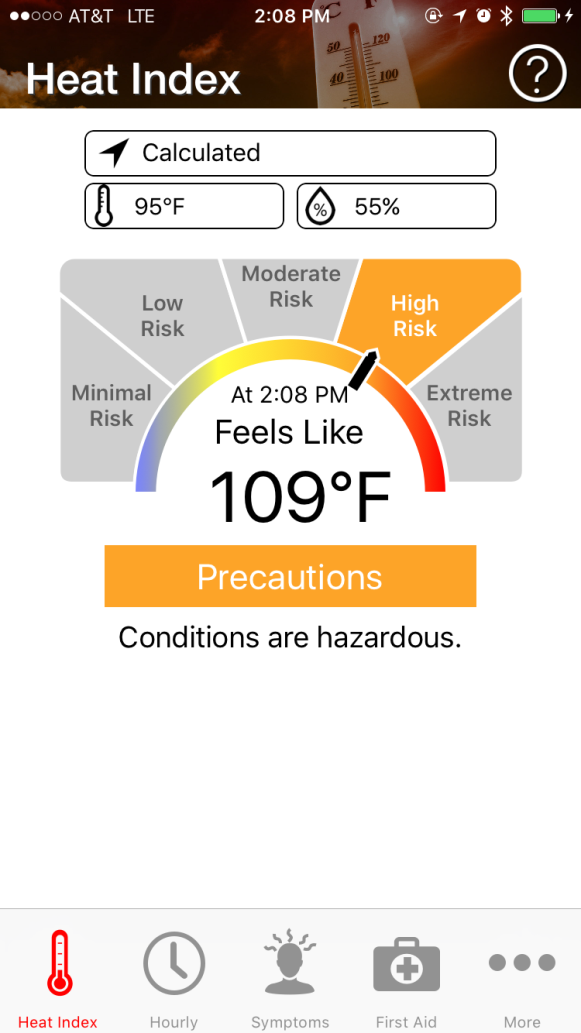Workers die from heat related illnesses every summer and every death is preventable. When heat
stroke doesn’t kill immediately, it can shut down major body organs causing acute heart, liver, kidney
and muscle damage, nervous system problems, and blood disorders. Workers suffering from heat
exhaustion are at greater risk for accidents, since they are less alert and can be confused. Let’s look at
who is susceptible and how to prevent injuries in a hot work environment.
A. GENERAL
Workers exposed to extreme heat, or work in hot environments, may be at risk of heat stress. Exposure
to extreme heat can result in occupational illnesses and injuries. And, that makes prevention of heat
stress in workers very important. Some of the risk factors that contribute to heat stress are:
High temperature, humidity, no wind and direct sun exposure
Dehydration
Heavy Physical Labor
No recent exposure to hot workplaces
When working in a high heat or high humidity work environment, a supervisor or other designee should
continually monitor workers for alertness and signs or symptoms of heat illness, and regularly
communicate with workers that are working alone by radio or cellular phone.
B. HEAT ILLNESS, TREATMENT AND SYMPTOMS
There are five serious illness related to heat stress. Before you can recognize symptoms or treatment of
these illnesses, you need to have a general understanding of what each of the illnesses are. The illnesses
related to heat stress are:
Heat Rash – A skin irritation caused by excessive sweating during hot, humid weather.
o Symptoms: Looks like a red cluster of pimples or small blisters. More likely to occur on
the neck and upper chest, in the groin, under the breasts, and in elbow creases.
o Treatment: In most cases it will clear up on its own in a few days. Cool your body and
take a cool shower or bath, allowing area to air dry. DO NOT apply oil‐based products,
which might block your sweat glands.
Heat Syncope – A fainting (syncope) episode or dizziness that usually occurs with prolonged
standing or sudden rising from a sitting or lying position. Factors that may contribute to heat
syncope include dehydration and lack of acclimatization.
o Symptoms: Light‐headedness, dizziness or fainting.
o Treatment: Sit or lie down in a cool place when you begin to feel symptoms. Slowly
drink water, clear juice or a sports beverage.
Heat Cramps – Usually affect workers who sweat a lot during strenuous activity. This sweating
depletes the body’s electrolyte and moisture levels. Low electrolyte levels in muscles causes
painful cramps. (Heat cramps may also be a symptom of heat exhaustion.)
o Symptoms: Muscle pain or spasms usually in the abdomen, arms, or legs.
o Treatment: Stop all activity and sit in a cool place. Drink clear juice, sports beverage or
water with food. Avoid salt tablets. Don’t return to strenuous work for a few hours after
cramps subside. If cramps do not subside within one hour, seek medical attention.
Heat Exhaustion – The body’s response to an excessive loss of the water and sodium, usually
through excessive sweating. Workers most prone to heat exhaustion are those that are elderly,
have high blood pressure, and those working in a hot environment.
o Symptoms: Confusion or agitation, nausea, dizziness, dilated pupils,
o Treatment: Rest in a cool area. Drink plenty of water or other cool beverages. Apply ice
packs on the back of neck and inside joints. Take a cool shower, bath or sponge bath.
Heat Stroke ‐ The most serious heat‐related disorder. It occurs when the body becomes unable
to control its temperature. That’s where the body’s temperature rises rapidly, the sweating
mechanism fails, and the body is unable to cool down. When heat stroke occurs, the body
temperature can rise to 106° F or higher within 10 to 15 minutes. Heat stroke can cause death
or permanent disability if emergency treatment is not given.
o Symptoms: Slurred speech, convulsions, decreased sweating and urination, constricted
pupils, confusion or hallucinations, nausea and vomiting, throbbing headache. Body
temperature of 106° F.
o Treatment: Contact emergency medical services immediately. Move the worker to a
cool, shaded area. Remove excess clothing. Apply cool water to their body and fan their
body. DO NOT give fluids or water.
Pay close attention to the differences in symptoms of Heat Exhaustion and Heat Stroke. Without proper
attention, heat exhaustion can lead to heat stroke or heat stroke can occur suddenly, without any
symptoms of heat exhaustion. If a person is experiencing any symptoms of heat exhaustion or heat
stroke, GET MEDICAL CARE IMMEDIATELY ‐ CALL 911. Any delay could be fatal.
C. PREVENTION
Water, rest, and shade can mean the difference between life and death. Getting acclimated and building
tolerance to working in the heat helps prevent heat‐related illnesses and deaths as well. This is true
especially for new workers, those who have been away for a week or more, and all workers during a
sudden heat wave.
Avoid heavy exertion, extreme heat, sun exposure, and high humidity,
when possible. If you can’t, take these preventative steps to prevent
being overcome by the heat:
Hydrate ‐ Drink lots of water even when you’re not thirsty.
Take rest breaks in the shade.
Watch out for each other while work progresses.
Wear light and loose clothing.
Make sure you don’t overdo it. This is just as important as any other
prevention, pace yourself in any work activity.


